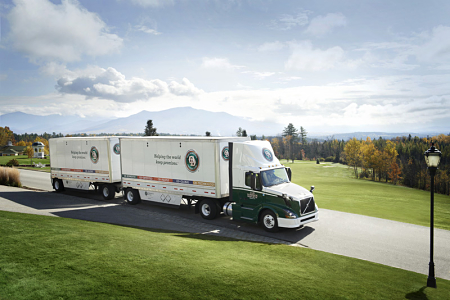Trucker Old Dominion sees boost in shipping demand
Old Dominion Freight Line Inc., one of the nation’s largest U.S. trucking companies, said it has seen strong shipping demand to start the year, adding to signs of a pickup in the U.S. economy, according to an article in the Wall Street Journal.
The less-than-truckload, or LTL, carrier, which combines orders from multiple customers on each truck, said the number of shipments it carried per day increased 6.4% in January and 6.1% in February compared with the same months a year earlier. The Thomasville, N.C.-based company said weight-per-shipment declined from a year ago, a trend trucking companies have said as retailers push smaller but more frequent shipments through their networks because of e-commerce demands.
“Old Dominion produced solid growth for the first two months of 2016, despite the continuing impact of a slow economy and a decline in fuel surcharges,” David Congdon, the company’s chief executive, said in a statement. “We believe the pricing environment remained stable during the first two months of 2016,” he said.
Old Dominion is the fourth-largest carrier by revenue in the less-than-truckload industry, according to consultants SJ Consulting Group, Various economic reports, including consumer sales figures retailers, have suggested momentum in the American economy. The Federal Reserve’s “beige book” report pointed to expansion in most regions of the U.S. in the first few weeks of 2016, including greater consumer spending and a firming job market.
Still, trucking firms still face other challenges, including the struggling manufacturing sector and lower fuel surcharges. Old Dominion said its revenue per hundredweight, a measure of pricing strength that reflects revenue generated for each hundred pounds of goods transported, rose 4.6% in January and 3.4% in February, excluding fuel surcharges.
Orders for durable goods are showing signs of rebound, which could help Old Dominion’s industrial business. And the company has said it sees a benefit from the growing transportation demand from retailers that are increasingly in need of speedy delivery because of e-commerce.
“There continues to be a demand for LTL service moving freight into distribution centers, where the e-commerce freight goes back out by parcel,” Congdon said on the company’s earnings call last month. And with shippers wanting everything “faster and quicker, I think the premium service LTL providers can continue to bring freight into these distribution centers to fill the e-commerce demand.”






